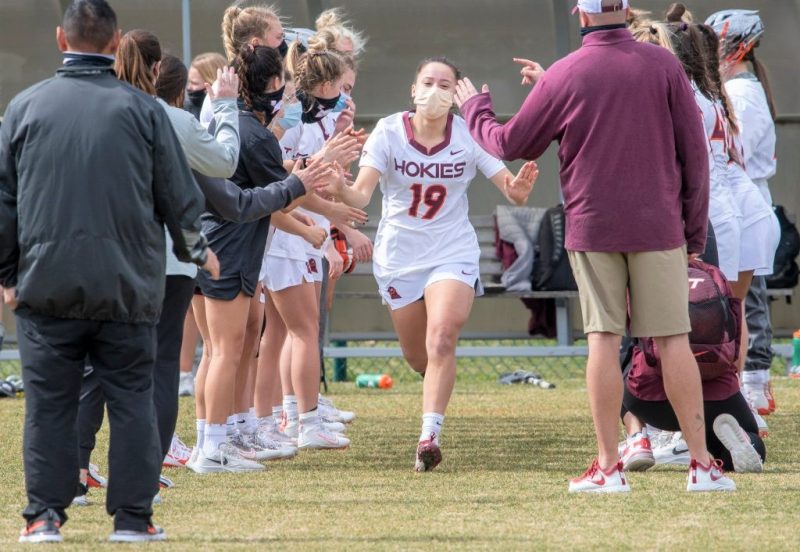
Once, during a high school lacrosse game, a group of fans from an opposing high school called Jacelyn Lazore and her teammates – many of whom were Native Americans – derogatory names associated with Indigenous peoples.
That incident, which Lazore vividly recalls, happened more than five years ago, and stereotypes unfortunately still exist in today’s world. But the young woman, who now plays attack on the Virginia Tech lacrosse team and is a member of the St. Regis Mohawk Reservation on the Canadian border, refuses to shun her heritage and culture. On the contrary, she embraces her background, choosing to educate and encourage when the situations allow for it.
“It’s definitely defeating, but it makes room for the opportunity to change the perception in the way that others see us,” Lazore said.
Lazore knows about fighting for visibility, awareness, and engagement, both within her own tribe and outside of it. Tribal rules prevented girls from playing lacrosse, but several years ago, Lazore and her teammates won over the clan mother of the tribe, who got other tribal leaders to change their bylaws and later helped with fundraising efforts to keep the girls program afloat when budget cuts originally forced her high school to eliminate the team.
In Blacksburg, Lazore, a sophomore, became involved with Native at VT where she found a group of people with like interests and backgrounds and with whom she could relate outside the sport of lacrosse.
“I started to feel more of a sense of home when I met the Native at VT group,” Lazore said. “They’re a very small group, but they’re very big in the sense of family. Even though I’ve had a limited amount of time to be with them — because the majority of time, I’m with my team lifting, I’m traveling, or I’m practicing – but the time I’ve had with them, it’s been very, very, comforting.
“I found that sense of community just through this small group of individuals. We come from different backgrounds, but we do share the same intentions to have Indigenous excellence represented everywhere.”
Currently, Native Americans comprise less than 1 percent of the student population at Virginia Tech, but according to Melissa Faircloth, a graduate student pursuing a doctoral degree in sociology with a focus on the experiences of Native students on college campuses who is the full-time director of the AIICC, the number of applications rose in the past year and efforts to let Native American high school students know that Virginia Tech welcomes diversity are taking effect.
“We’ve had in recent years a more concerted effort from admissions to reach out to this population,” Faircloth said.



